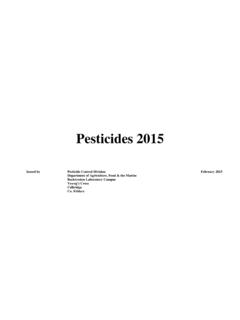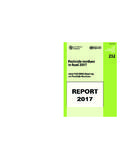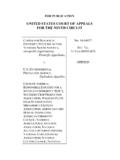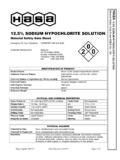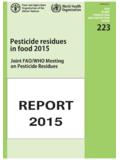Transcription of INSECTICIDES AND ACARICIDES - Health and Safety Executive
1 Issue date: 15 April 2004 GUIDELINES ON THE EFFICACY DATA REQUIREMENTS FOR APPROVAL OF NON-AGRICULTURAL PESTICIDE PRODUCTS INSECTICIDES AND ACARICIDES Issue date: 15 April 2004 CONTENTS Page DEFINITION OF TERMS FOREWORD 1. INTRODUCTION 1 2. WHEN EFFICACY DATA ARE REQUIRED 2 3. FRAMEWORK OF THE ASSESSMENT PROCESS FOR COMMERCIAL APPROVAL 3 4. DRAFT LABEL INFORMATION/LABEL CLAIMS 4 5. DATA REQUIREMENTS 5 Data sources 5 Types of data generated 5 The importance of controls in efficacy studies 8 Read-across of efficacy data to different formulation types and application methods 9 Summary of data requirements 9 6. DETAILS TO BE INCLUDED IN A TEST REPORT/STANDARD OF REPORTING 11 General information which should be submitted on the active ingredient 11 Information which should be submitted on each study 11 Presentation of results from efficacy studies 14 7.
2 CONCLUDING COMMENTS 15 APPENDIX 1 Possible insecticide efficacy claims: a breakdown of the information which may be required by the generation of efficacy data 17 APPENDIX 2 Label claims 18 APPENDIX 3 Possible insecticide/acaricide formulation types 21 APPENDIX 4 Bait stations and similar formulation containment devices information to be provided form simulated use and field trials 23 APPENDIX 5 Current standard test methods available for efficacy testing of INSECTICIDES and ACARICIDES 24 Issue date: 15 April 2004 DEFINITION OF TERMS Active ingredient The component of a product which fits it for use as a pesticide. Application An application seeking approval to sell, supply, store, use or advertise a pesticide product in Great Britain. Approval An approval given jointly by Government Ministers under Regulation 5 of The Control of Pesticide regulations (As Amended) 1986 (COPR).
3 Committees The Advisory Committee on pesticides (ACP), established under SI 1985 No 1517, and the Interdepartmental Secretariat (IDS). Evaluation A written assessment of study reports or other data examined in the course of an appraisal by the Registration Authority. Ministers This refers to the Ministerial representatives of the following: Department of Environment, Food and Rural Affairs (DEFRA), Department for Work and Pensions (DWP), Department of Health , the Scottish Executive and the National Assembly for Wales. Pesticide As defined in The Food and Environmental Protection Act 1985 (FEPA) (part III., section 16. (15) + (16)) and COPR (section 3. (1)). Quality Assurance Those procedures and controls, including inspections and audits, designed to monitor studies to assure the quality of the data.
4 Raw Data All original records and documentation, including verified copies thereof, which are the results of original observations and activities in a study. Registration Authority The Health and Safety Executive (HSE), Biocides and pesticides Unit (BPU). Issue date: 15 April 2004 FOREWORD 1. As part of the commitment of FEPA and COPR, the Registration Authority (HSE) are obliged to look at the effectiveness (efficacy) of non-agricultural pesticide products submitted for approval. Efficacy will be considered as part of the approval of non-agricultural pesticides on the basis of a flexible, cost effective framework that requires a sufficient amount of data necessary to: i) establish that a product is efficacious in relation to its conditions of approved use and that label claims are justified, and; ii) satisfy the requirement of Ministers who give approval on the basis of recommendations from the ACP and IDS.
5 In order to meet this obligation a structured approach towards the efficacy evaluation of products has been adopted whereby the efficacy will be addressed principally at a number of key stages (see section 2). 2. This document gives guidance on the nature and extent of the efficacy data required to gain a commercial approval for the sale, supply, use, storage and advertisement of a pesticide containing an active ingredient(s) intended for use as an insecticide/acaricide, or to support continuing approval of current products containing existing active ingredient(s) at review. 3. It embodies the efficacy policy outlined by HSE and endorsed by the ACP in January 1993, the basic framework of which is presented in the Consolidated Data Requirements for Non-Agricultural Pesticide Products and Their Active Substances made available to approval holders in July 1993.
6 It outlines and formalizes, but does not represent a change to, the methods which have been used in evaluations presented to, and endorsed by, the Committees in this time. 4. This document is prepared both for applicants who are routinely involved in efficacy testing strategies and those who may not be so familiar with such strategies. Therefore, it is hoped that the presentation style adopted in this document will be amenable to all current and potential approval holders of non-agricultural pesticides and other interested parties. 5. It is intended to be of use not only to companies, and staff within companies, involved in conducting efficacy tests and establishing efficacy strategies, but also companies registration departments involved in preparing dossiers of efficacy data in support of product applications.
7 Issue date: 15 April 2004 11 INTRODUCTION This document gives guidance on the nature and extent of the efficacy data required to gain commercial approval of a pesticide containing active ingredient(s) for use as an insecticide/acaricide against pests in public hygiene situations (including stored product pests), and also for continuing approval of current products containing existing active ingredients following review. The HSE is the Registration Authority to which such applications should be submitted. In the context of this document, insecticide/acaricide products for use against public hygiene and stored product pests are deemed to include other products which also make claims for use against other arthropods, such as woodlice and millipedes.
8 These guidelines are designed to be flexible and will not specify rigid protocols to which tests must be conducted. Instead, applicants are encouraged to submit data generated to a sound scientific standard using their own testing strategies or studies conducted to national or international efficacy methods. EACH STUDY PRESENTED WILL BE EVALUATED ON ITS OWN MERITS. The assessment will be made solely in relation to the claims made on the product label for the effectiveness of the product . However, these claims will need to be sufficiently detailed to enable an assessment to be made; taking into account the pests to be controlled, the method(s) of application, application rates and use patterns of the product (s). The data submitted should adequately demonstrate that the use of the active ingredient(s) in the proposed products result in a measurable beneficial effect.
9 To show such a beneficial effect, it is likely that the active ingredient s performance will need to be compared with that of a reference study (a test control ) in which the pesticide is not applied. Examples of typical efficacy claims which may be made for a product and the activity which may need to be shown through efficacy testing are described in Appendix 1. Issue date: 15 April 2004 22 WHEN EFFICACY DATA ARE REQUIRED To support the approval of non-agricultural pesticide products, HSE will not normally require efficacy data to support each and every product application. A structured approach has been adopted towards the efficacy assessment of product applications and HSE will request that data to be submitted at a number of key stages as outlined below: a. In support of new active ingredients (and their products) and extensions of use of existing active ingredients (and their products) i) to support applications for products containing an active ingredient yet to be assessed prior to first approval in the UK ii) to support applications for products containing an active ingredient previously used in agricultural pesticides ( an agricultural insecticide active ingredient now intended for use in non-agricultural pesticides as an insecticide/acaricide) iii)
10 To support applications for products containing an active ingredient previously used in another sphere of non-agricultural pesticide use ( an active ingredient currently used in wood preservative products now intended for use in public hygiene INSECTICIDES ) iv) to support applications for products containing an existing active ingredient but incorporating novel formulation types and/or novel* application/delivery methods v) to support applications for products containing an existing active ingredient targeted against novel* organisms b. To support existing active ingredient s (and their products) at review** c. To satisfy either post approval or post review data requirements set by the ACP arising from evaluation at submission times (a) or (b) * Novel in this instance is considered to be a case where no precedent exists for formulation type, application method or target organism(s).










